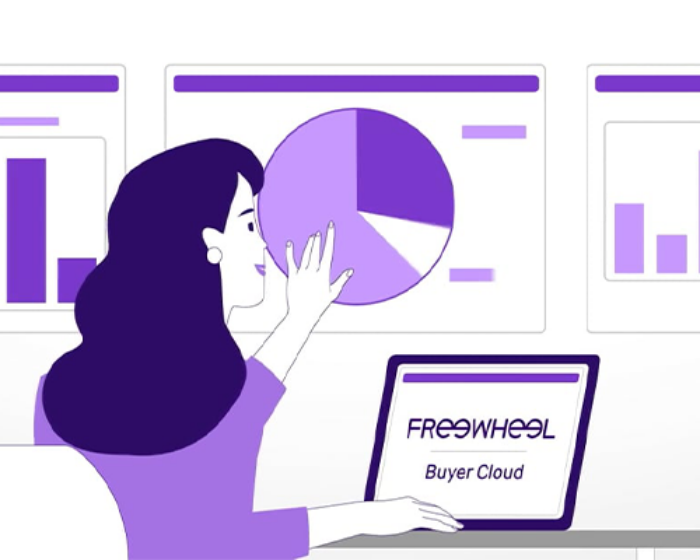Three Political Buyers Share Their Perspectives
Political advertisers today face many challenges as they work to reach targeted audiences who are watching their favorite content across multiple screens. As voters’ options for consuming content expand, many advertisers are finding data and technology essential to reach an engaged voter audience and ensure they are seeing a candidate’s message whenever they choose to watch TV. Increasingly, this includes reaching engaged audiences on the connected TV screen. The Comscore State of OTT 2021 report estimates there are more than 80 million connected TV U.S. households this year, up from 74 million in 2020.
We recently sought opinions from several political advertisers about the challenges and opportunities they face reaching their audience going into the next election cycle. We also asked them how they think connected TV and data will contribute to addressing those challenges and opportunities.
Respondents were Patti Heck, President of Crossroads Media, Lauren Richards, Partner and Digital Director at Sage Media Planning and Placement, and Nathaniel Kronisch, CEO of Buying Time Digital. All three agree that political advertisers are relying on technology to provide them a holistic view of their cross-screen tactics to avoid duplication. In particular, they and others are turning to connected TV advertising to target audiences with scale. Using data on voting behavior and other characteristics, these advertisers are finding new ways to make their candidates’ messages heard, reaching their audience whenever and wherever they choose to watch TV.
1. What is your biggest challenge in reaching voters in the upcoming political cycle?
[Heck:] There are several big challenges this cycle. One is finding voters receptive to clients’ messaging. Another is reaching those voters on the correct combination of advertising platforms. And most important, determining the optimal spend across all platforms.
[Richards:] The fractured media landscape is a challenge. We have to reach voters where they consume media, which means we are following them to more and more platforms. Broadcast, cable, and radio continue to be an important piece of a media plan, but with viewers of all demographics watching streaming television according to their schedules, we are making it a larger budget item in most of our media plans.
[Kronisch:] We still wish match rates were better on most platforms. Clients really want to match first party data and micro-target accordingly. A true one-to-one match across an entire digital voter file is still unattainable.
2. How will your tech stack play a role in helping you achieve your goals?
[Heck:] The tech stack will help our buying be more holistic and avoid some problems caused by fragmentation. This will hopefully be able to give us a good idea of combined reach and frequency across platforms,help reach unduplicated targets,aid in integrated reporting, and, ultimately, prove each campaign was optimized to reach as much of the target audience as possible.
[Richards:] One of the challenges in buying streaming television is keeping track of all the planning requests and insertion orders. With an integrated, centralized platform, we can spend less time managing paperwork and more time focusing on media strategy.
[Kronisch:] We utilize multiple DSPs as well as a variety of data management partners. By expanding the list of platforms, vendors, and partners that we use, we have access to more inventory and data sets which enable us to deliver best-in-class paid digital communication.
3. How important will a robust CTV strategy be in this political season vs. previous ones?
[Heck:] A robust CTV strategy will be more important and play a bigger role in this political season as more and more voters are consuming content across devices and platforms. While traditional television isn’t gone, people are consuming more content than ever. It’s important to have the ability to target voters where they are consuming content and ensure that we aren’t oversaturating that audience with our omnichannel media mixes.
[Richards:] Connected television has been a growing portion of media budgets each election cycle. With the increasing number of ad-supported streaming platforms, viewers have more options than ever for watching television. Just as we spent more on CTV in 2020 than in 2018, we expect CTV will be an even greater piece of advertising budgets in 2022. It is also a cost-effective product for most campaigns. Local or legislative candidates who cannot afford broadcast or cable can sometimes include CTV in their media plans. And it’s important for candidates and issue groups to expand their reach and frequency beyond traditional television or solely digital plans.
[Kronisch:] A robust CTV strategy will be incredibly important. As viewership accelerated across screens during the pandemic andfreedom to select entertainment on demand expanded, CTV has grown in popularity. Political advertisers need to take advantage of this and adjust accordingly.
4. What role will data play in helping you reach your voters?
[Heck:] Data will continue to play an integral role in helping us reach persuadable voters and those most receptive to our clients’ messaging.
[Richards:] On streaming television we can select audiences that are as broad as broadcast, but we can also focus on smaller audiences or run separate creative for different targets. With good data on voting behavior and other demographic or qualitative characteristics, we can decide whether it makes sense to have a wide or narrow target. We can also learn how much that audience overlaps with traditional television viewers and if we are getting greater reach or higher frequency in our media plan.
[Kronisch:] For many campaigns, first-party data will still be the primary target. But as operating systems adjust to new privacy expectations, it will become more important to employ other targeting strategies that de-emphasize the reliance on voter lists.
5. What will success ultimately look like?
[Heck:] Ultimately success will be a win at the ballot box or a shift in attitude or thought about an issue, but incremental wins would include being able to provide clients with more accurate reach and frequency numbers across all platforms, proof of message movement, and more cost-effective media buys across all platforms.
[Richards:] We need a platform that integrates demographic data with voting behavior while centralizing management of planning requests and IOs. We also want to see how our broadcast and cable buys compare to streaming television so we can determine where our plans are strongest and places where we may need other types of media to fill in the gaps. Success means we are creating more well-rounded media plans across a variety of platforms. It means our media strategists are spending more time crafting plans and working with clients than they are handling paperwork.
[Kronisch:] Success always ultimately looks like electoral victories for our clients.
FreeWheel is creating solutions for political advertisers to help them reach voters accross premium CTV inventory. To learn more, contact us or the author directly.
Al Behmoiras is a Poltical Account Director at FreeWheel. You can email Al at abehmoiras@freewheel.com.



